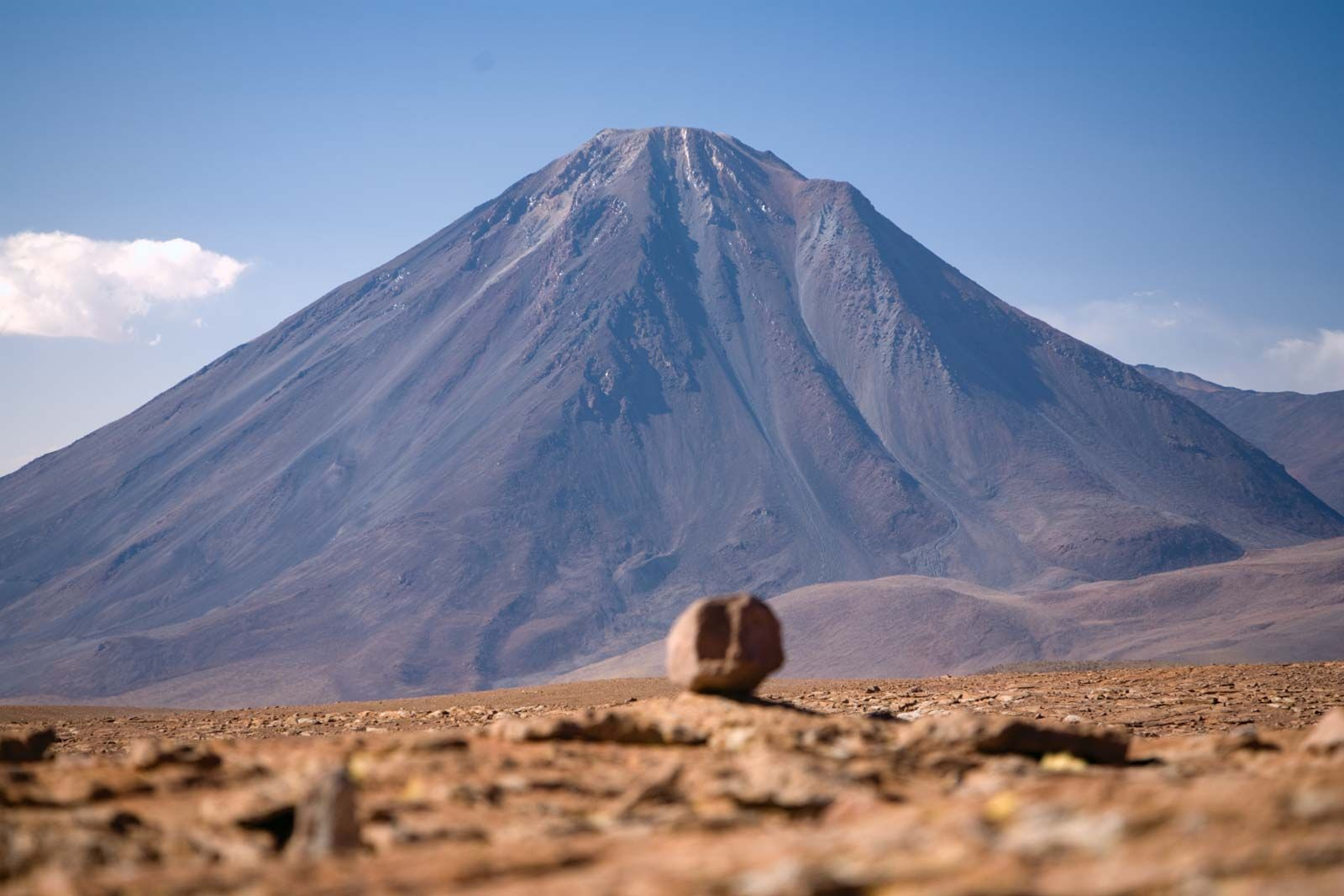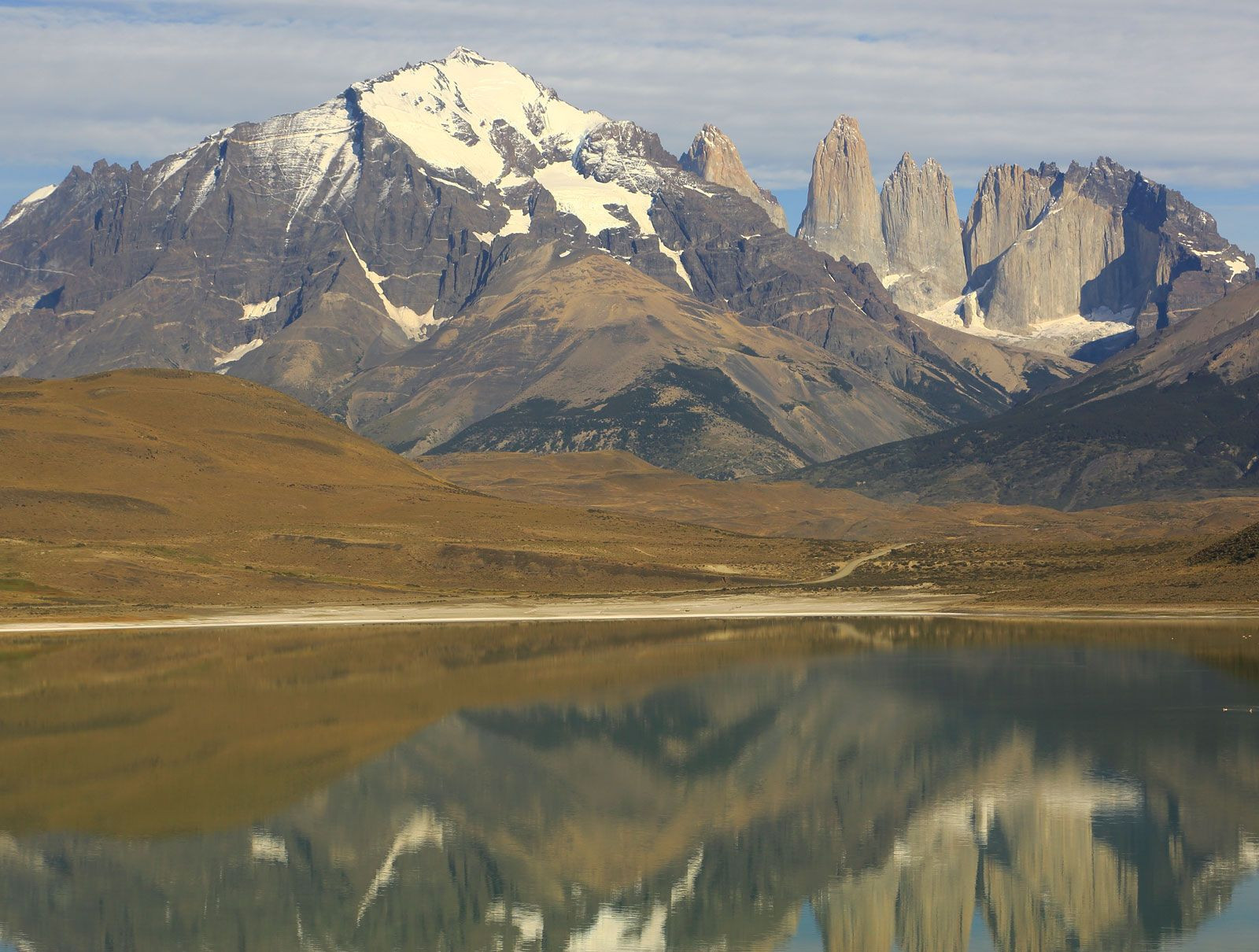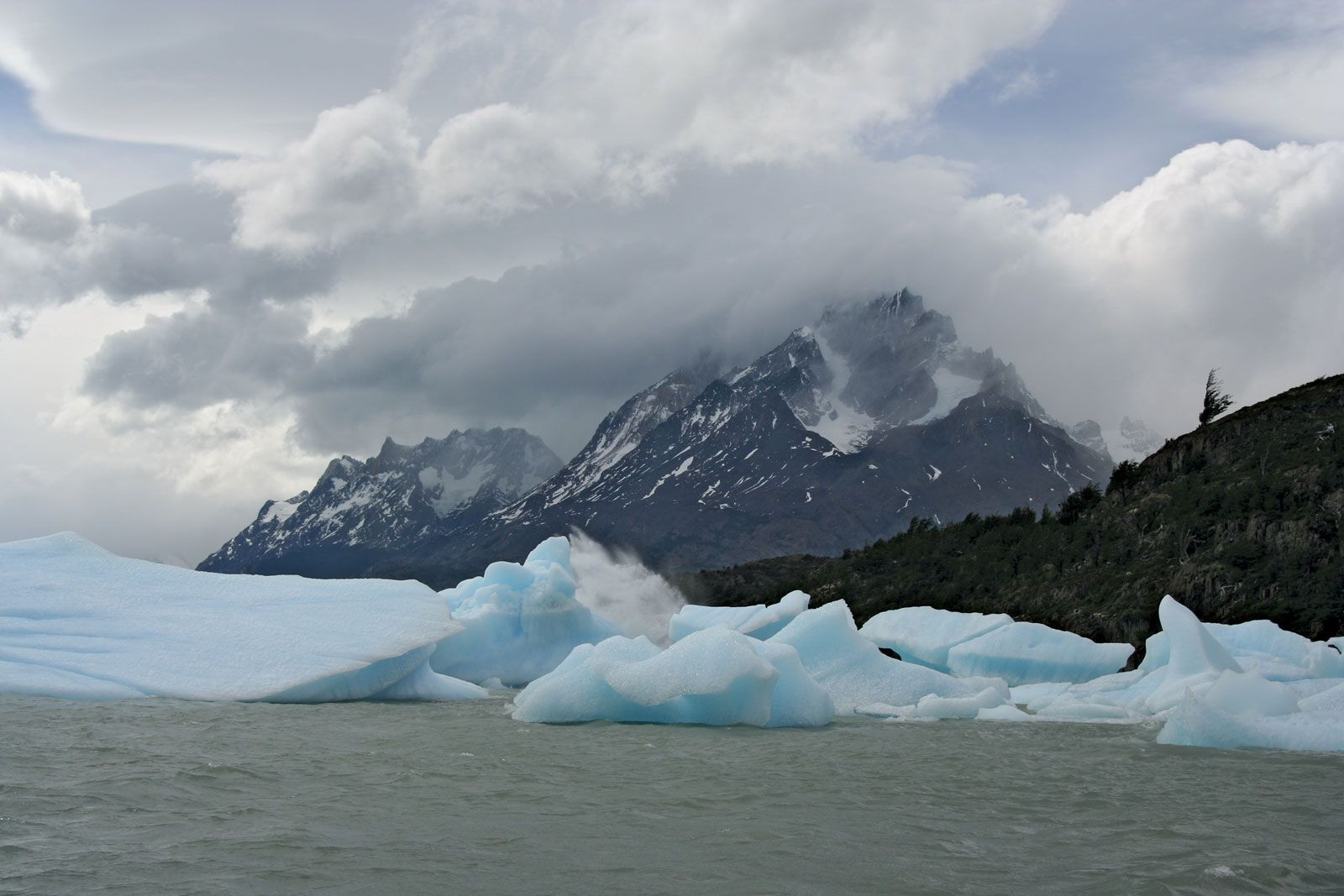Chile, a long, narrow country stretching down the southwestern edge of South America, is perhaps best defined by the Andes Mountains. But Where Is Chile exactly, and how do these towering peaks shape its identity? Extending for almost the entire length of the country, the Chilean Andes form a significant portion of its eastern border with Argentina. This immense mountain chain is not just a physical boundary; it’s a defining geographical feature that influences Chile’s climate, landscape, and culture. The Chilean Andean system is characterized by its impressive height, often capped with snow, deep valleys carved by glaciers, and dramatically steep slopes.
 Snow-capped mountains and valleys of the Chilean Andes
Snow-capped mountains and valleys of the Chilean Andes
The story of the Chilean Andes begins millions of years ago, during the Jurassic Period, approximately 200 million years ago. In this era, marine and terrestrial sediments accumulated in the Andean geosyncline, a vast geological depression. As the Pacific Plate shifted and was overridden by the South American Plate, these sediments underwent immense folding and uplift, giving birth to the initial Andes ranges. During the Cenozoic Era, starting around 65 million years ago, intense volcanic activity and the effusion of molten rocks further sculpted the landscape. This period laid down paleovolcanic materials, including rhyolites and dacites, which are incredibly significant as they host the rich deposits of copper, iron, silver, molybdenum, and manganese ores that Chile is renowned for. The coal deposits found in central Chile also trace their origins back to the Cenozoic Era.
The Andes continued their dramatic uplift throughout the Cenozoic Era, accompanied by ongoing volcanic eruptions. This vigorous tectonic activity eventually led to the separation of the Andes from the older coastal ranges, creating the intermediate depression that lies between them. As the Quaternary Period began, roughly 2.6 million years ago, the Andes had reached even greater heights than they stand today. The global cooling of the Quaternary triggered massive glaciation, and ice masses enveloped the higher peaks, with glaciers descending into the intermediate depression. As these glaciers retreated, they carved out rich sediments from the valleys, depositing them into the longitudinal depression. The picturesque Lake District of south-central Chile, famed for its stunning beauty, is a direct result of the melting ice from around 17,000 years ago, leaving behind numerous lakes. Since the Holocene Epoch began approximately 11,700 years ago, the Chilean Andes have remained largely unchanged in their overall form, though they continue to experience uplift and occasional volcanic eruptions, reminding us of the dynamic forces that shaped them.
 Volcano Licancábur in the Atacama Desert, Chile
Volcano Licancábur in the Atacama Desert, Chile
Moving geographically within Chile, the Andes in the northern reaches, up to latitude 27° S, present a wide and arid landscape. Here, the mountains typically reach elevations between 16,500 and 19,500 feet (5,000 and 6,000 metres). Many of the highest peaks in this region are extinct volcanoes, including notable summits like Llullaillaco (22,109 feet), Licancábur (19,409 feet), and Ojos del Salado (22,614 feet). Following the last glacial period, meltwater accumulated in shallow lakes within the elevated basins. Today, these salt lake basins, known as salares, are steadily evaporating, with the Atacama Salt Flat being the most famous and extensive. As we journey southward into central Chile, between latitudes 32° and 34°30′ S, the mountains, after a slight decrease in height, rise again majestically. Peaks in this central zone reach impressive heights, such as Mount Tupungato at 21,555 feet and Maipo Volcano at 17,270 feet. These towering summits are perpetually covered in snow, providing a crucial source of meltwater that feeds the numerous rivers flowing through central Chile. The Andes near Santiago also become a hub for winter sports enthusiasts, drawn to the snowy slopes.
Further south, between 34°30′ and 42° S, the highest mountains are predominantly volcanoes, ranging in height from 8,700 to 11,500 feet. This volcanic chain includes both extinct and active volcanoes such as Copahue, Llaima, Osorno, and the highest among them, Mount Tronador, reaching 11,453 feet. Their perfectly conical shapes are reflected in the tranquil waters of the Lake District, creating breathtaking scenery that is considered some of the most spectacular in temperate South America. Continuing southward into southern Chile, below latitude 42° S, the Andes gradually lose elevation, and their peaks become more isolated due to the erosive forces of Quaternary glaciation.
 Rugged cliffs bordering Lake Nordenskjöld in Torres del Paine National Park, Chilean Patagonia
Rugged cliffs bordering Lake Nordenskjöld in Torres del Paine National Park, Chilean Patagonia
Venturing even further south, we arrive at Chilean Patagonia, a vaguely defined region that includes Magallanes and sometimes extends to Chilean Tierra del Fuego. Even here, significant mountain heights persist. Mount San Valentín surpasses 12,000 feet, and Mount Darwin in Tierra del Fuego reaches nearly 8,000 feet. Patagonia is replete with reminders of the last ice age, including classic U-shaped glacial troughs, sharp-edged mountains, and numerous Andean lakes. It is also home to approximately 7,000 square miles of continental ice masses. The Southern Ice Cap, located between 48°30′ and 51°30′ S, stands as the largest ice mass in the Southern Hemisphere outside of Antarctica, a testament to the enduring glacial forces that have sculpted this remarkable landscape.
 Lago de Grey, Torres del Paine National Park, Chile
Lago de Grey, Torres del Paine National Park, Chile
In conclusion, to answer where is Chile, we must understand the omnipresent Andes. These mountains are not merely a geographical location but the very spine of the country, dictating its diverse climates, rich mineral resources, and awe-inspiring landscapes, from the arid north to the glacial south. The Andes are undeniably central to Chile’s identity and its place on the map.
